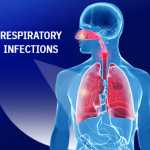Upper Respiratory Tract Infection

An Upper Respiratory Tract Infection (URTI) is a health condition that affects the upper part of the respiratory system, which includes the nose and nasal cavities, sinuses, pharynx, and part of the larynx—essentially all the parts above the vocal cords.
Any health disruption in the upper respiratory tract can impact the entire body, as this system is responsible for supplying oxygen and removing carbon dioxide. Despite its vital role, the upper respiratory tract is highly vulnerable to infections due to its sensitivity and exposure to external factors. Adults can experience Upper Respiratory Tract Infections two to four times per year, as the viruses or bacteria responsible can be transmitted through airborne droplets or direct contact with infected individuals.
In this article, we’ll explore the most common Upper Respiratory Tract Infections, their symptoms, risk factors, prevention, and treatment options.
- Common Types of Upper Respiratory Tract Infections
- Is Upper Respiratory Tract Infection Dangerous?
- Symptoms of Upper Respiratory Tract Infection
- Prevention of Upper Respiratory Tract Infection
- Treatment of Upper and Lower Respiratory Tract Infections
Common Types of Upper Respiratory Tract Infections
There isn’t a single infection that causes all Upper Respiratory Tract Infections. Instead, several illnesses can lead to inflammation in this region. The most common include:
1. Otitis Media (Middle Ear Infection)
This includes acute, effusion-related, and chronic forms. It disrupts the Eustachian tube and is primarily caused by bacterial infections, particularly Streptococcus pneumoniae, a major cause of both middle ear and Upper Respiratory Tract Infections.
2. The Common Cold
Caused by various viruses, it’s the most widespread Upper Respiratory Tract Infection. Although generally mild, it causes inflammation in the nose and throat.
3. Sinusitis
The sinuses are connected to the upper respiratory tract and can become acutely or chronically inflamed due to viral or bacterial infections. The symptoms vary depending on the type of sinusitis.
4. Pharyngitis
Infection can affect any part of the pharynx—nasopharynx, oropharynx, or lymphatic tissues. Viral infections are the leading cause, but bacterial pharyngitis, particularly from group A Streptococcus, also occurs. Treatment depends on the underlying cause.
5. Tonsillitis
This infection affects the tonsils at the back of the throat. It may be acute, recurrent, or chronic and is common among children. Causes include both viral and bacterial agents.
6. Epiglottitis
A rare but life-threatening Upper Respiratory Tract Infection, epiglottitis causes rapid swelling that can block the airway and lead to respiratory failure. It’s more common in children and often caused by Haemophilus influenzae type B. Emergency treatment is essential.
Is Upper Respiratory Tract Infection Dangerous?
Upper Respiratory Tract Infections are typically caused by airborne viruses or bacteria, making them more common during colder seasons. Several risk factors can increase the likelihood of contracting these infections, including:
- Allergies
- Weak immune system
- Poor personal hygiene
- Crowded living or working environments
Symptoms of Upper Respiratory Tract Infection
While symptoms vary depending on the specific infection, common signs of Upper Respiratory Tract Infections include:
- Sore throat and irritation
- Nasal congestion
- Sinus pressure and swelling
- Fever and headache
- Mucosal inflammation
- Tracheal inflammation
- Coughing and sneezing
- Swollen lymph nodes
- Painful swallowing
- Loss of appetite
- Wheezing
- Facial tenderness
- Watery eyes
- Runny nose
If left untreated, Upper Respiratory Tract Infections can lead to serious complications such as:
- Meningitis
- Intracranial abscess
- Pneumonia
- Sepsis
- Bronchiolitis
- Chronic bronchitis
Prevention of Upper Respiratory Tract Infection
Effective preventive measures for Upper Respiratory Tract Infections include:
- Practicing good personal hygiene and handwashing.
- Avoiding close contact with infected individuals.
- Getting seasonal flu vaccines.
- Eating a healthy diet rich in fruits and vegetables.
- Limiting sugar intake to support immune function.
- Refraining from touching the face with unwashed hands.
- Using tissues while sneezing or coughing.
Treatment of Upper and Lower Respiratory Tract Infections
Treatment options for Upper Respiratory Tract Infections vary depending on the cause and severity. They may include:
- Rest and hydration
- Antibiotics (for bacterial infections)
- Bronchodilators
- Vitamin supplements
- Use of humidifiers or steam inhalation
A proper diagnosis by a healthcare professional is essential to determine the best course of treatment based on the specific infection and its root cause.






